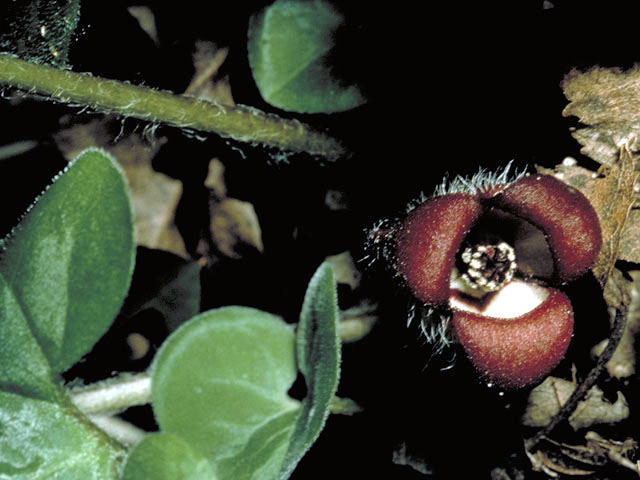Where does Canadian wild ginger belong? Allow me to explain!
Domain
|
Eukarya
|
Contains a membrane-bound nucleus and membrane-bound
organelles in the cytoplasm. |
Kingdom
|
Plantae
|
Multi-cellular photosynthetic autotroph that utilizes a
reproductive cycle that alternates generations between a
sporophyte and gametophyte. |
Phylum
|
|
Flowering plant, or angiosperm, that has leaves, roots,
and vascular tissue. |
Class
|
|
Eudicot, meaning the following characteristics are
present: two cotyledons, net-like veins, vascular tissue
in a ring arrangement, three openings in the seed, and
floral petals in multiples of four or five. |
Order
|
|
Flowering plant that is very widespread with the
capability to self pollinate. |
Family
|
|
Birthwort family: Flowers usually have 5 sepals and 5
stamens and are bisexual, have a hollow stem, and alternating
leaves with absence of stipules. |
Genus
|
Asarum
|
Wild ginger: perennial,
low-growing herbs, gingery heart-shaped leaves and
rhizomes, mostly evergreen. |
Species
|
Asarum canadense
|
Perrenial plant with green,
heart-shaped leaves, purple-brown cup shape of three
united sepals, one flower per plant found horizontal on
the soil surface. |
The following is a phylogenetic tree created to show some of Asarum canadense's closest relatives. This tree is primarily based on morphological differences.

The following tree displays five of Asarum canadense's closest relatives and their common name. The genus Asarum consists of sixty different perennial woodland species, but the following are most closely related to Asarum canadense based on morphology.

Find out about Asarum canadense's habitat to learn how it grows best.
